Microwave Sanitization of Cleaning Sponges Explained
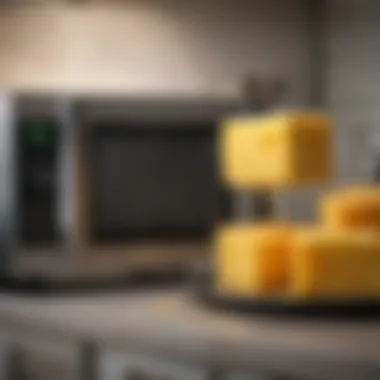
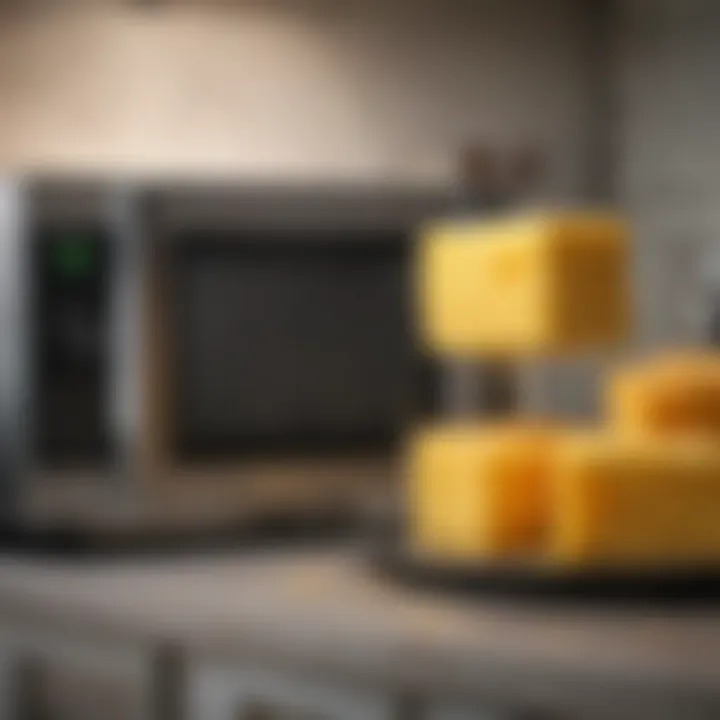
Intro
In today’s kitchens, sponges serve a crucial role. They are often the unsung heroes in our quest for cleanliness, helping to scrub away dirt and residue from our dishes. However, these handy tools can become breeding grounds for bacteria if not properly maintained. This article unveils the methodology of microwave sanitization, a practice that can prolong the life of your sponge while ensuring a hygienic experience in food preparation. Here, we delve into the scientific principles at play, the procedure one should follow, and why this practice is essential for kitchen hygiene.
Understanding the right methods of cleaning sponges can greatly impact health and safety. The frequency of sponge replacement, along with proper sanitization techniques, can prove vital, especially in households that often handle raw food ingredients. Aiming to highlight valuable insights, we discuss the implications of using unsanitized sponges, as well as other cleaning techniques that could complement microwaving.
By the end of this exploration, readers will gain not only practical advice but also an appreciation for the science behind sponge sanitization.
Foreword to Sponge Sanitization
The cleanliness of sponges used in kitchens is often overlooked, yet it plays a crucial role in maintaining overall hygiene. Sponges can harbor a multitude of bacteria, yeast, and fungi from food residues and spills. Thus, sanitizing them regularly is not merely a suggestion but a necessity to ensure a safe cooking environment.
Keeping sponges sanitized helps in reducing the risk of cross-contamination in food preparation. This is particularly important in homes where different types of food are prepared, including raw meats and fresh vegetables. When these bacteria are transferred to clean surfaces or foods, foodborne illnesses can arise, posing serious health risks. Regular sanitization of sponges contributes to a cleaner kitchen, where food safety is prioritized.
Furthermore, the method of sanitizing sponges using a microwave is both convenient and effective. This method avoids the need for harsh chemicals that might linger on sponges, potentially contaminating food. In addition, microwave sanitization is a process that can be easily integrated into a busy lifestyle, making it an accessible option for many households.
Thus, understanding the science and method of microwave sanitization is imperative. It offers practical solutions to a widespread issue in kitchens. By adopting and optimizing these practices, we take significant steps towards a healthier food preparation environment.
Microwave as a Cleaning Tool
The microwave has evolved into a multifunctional appliance in many kitchens, proving its utility extends beyond reheating leftovers. One of the less discussed but noteworthy functions of a microwave is its effectiveness in sanitizing cleaning sponges. This section will explore how microwave sanitization works and its significance in maintaining kitchen hygiene.
How Microwaves Work in Cleaning
Microwaves operate using electromagnetic radiation, targeting water molecules present in sponges. When a sponge is placed in the microwave and heated, these water molecules absorb energy and begin to vibrate rapidly. This agitation generates heat, which is crucial for killing harmful microorganisms.
The process requires the sponge to be moist to ensure it does not dry out and catch fire. Additionally, the heat generated penetrates the sponge even in dense material, ensuring a significant reduction in bacteria. For effective cleaning, it is essential to
- Use a wet sponge
- Turn your microwave on high power
- Monitor the heating process to prevent overheating
This method is both quick and efficient, presenting an easy way to maintain sanitation standards in household kitchens.
Effectiveness of Heat in Killing Bacteria
The scientific rationale behind using heat to sanitize sponges draws on the tolerance thresholds of bacteria. Various types of bacteria, including E. coli and Salmonella, have specific temperature ranges in which they thrive. When heated above these levels, their cellular structure begins to break down, leading to cell death.
Research indicates that exposing sponges to heat for at least one minute can reduce bacterial load significantly. While this may vary depending on the sponge composition, the general consensus is that heating sponges in the microwave delivers a notable decrease in viable bacteria.
"Sponges can harbor millions of bacteria; microwaving them is a simple life hack to boost kitchen hygiene."
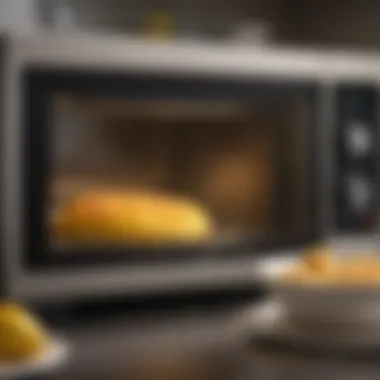
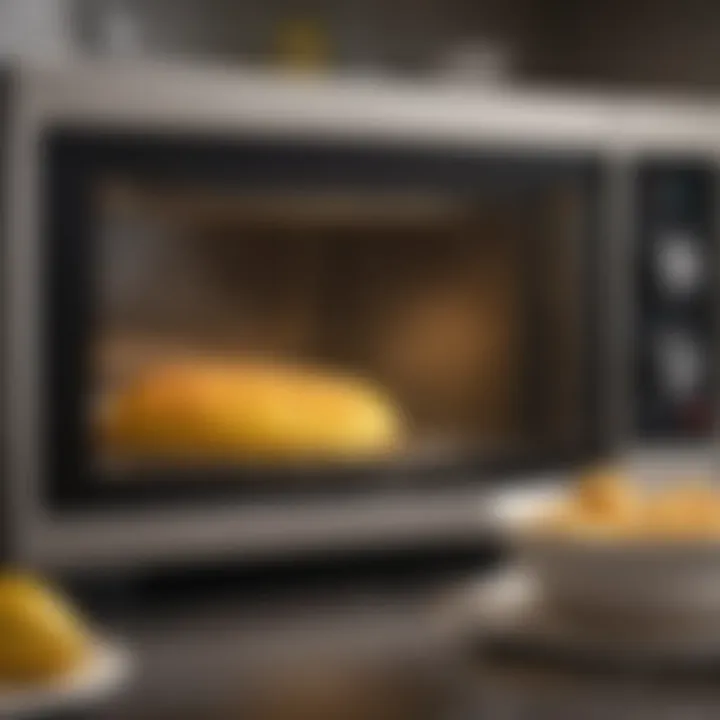
Duration for Microwaving Sponges
When it comes to effectively sanitizing kitchen sponges, the duration of microwaving plays a vital role. Understanding this topic helps ensure that users maximize the effectiveness of microwave sanitization while minimizing the risk of damage or safety hazards. The right time frame can significantly affect the removal of harmful microbes and bacteria, contributing towards maintaining a hygienic kitchen environment. Moreover, adhering to recommended durations fosters better sponge longevity and functional performance.
Recommended Time Frame
Research suggests that a duration of two minutes is often ideal for sanitizing most standard sponges in a microwave. This time frame is considered effective for raising the temperature of the sponge to a level that can effectively kill bacteria and other pathogens. However, it is important to note that this duration assumes the sponge is damp.
If the sponge is dry, microwaving for two minutes might not yield optimal results and could risk igniting the sponge. Therefore, it is essential to soak the sponge in water before microwaving. A simple way to do this is by completely saturating the sponge and placing it in a microwave-safe container to avoid direct contact with the microwave surface.
In summary, setting the microwave for around two minutes is generally sufficient to achieve effective sanitization. This is particularly relevant for household sponges used in food preparation environments.
Factors Affecting Microwave Duration
Several factors can influence the appropriate duration to microwave sponges. Recognizing these will allow users to adapt their cleaning routine effectively.
- Sponge Material: Different types of sponges, such as synthetic or natural, may react differently to heat. Natural sponges might require slightly less time than synthetic versions due to their composition.
- Microwave Wattage: Some microwaves operate at lower wattages, which may require longer durations to achieve an effective sanitization temperature. A lower wattage microwave may necessitate a duration exceeding the standard two minutes to ensure thorough cleaning.
- Sponge Thickness: Thicker sponges may retain more moisture and take longer to reach a temperature sufficient for killing microbes. Thinner sponges will often require less time.
- Presence of Additives: Many sponges come with additional features, such as non-scratch coatings or built-in scents. These additives can affect the microwave's effectiveness and safety.
Ultimately, understanding these factors will help users adapt and tailor the microwaving process for their specific sponge type and cleaning needs.
Safety Precautions When Microwaving Sponges
The act of microwaving sponges for sanitization is undoubtedly effective. However, it is essential to approach this method with caution. Safety precautions are critical to ensure the safety of both the user and the kitchen environment. By being aware of potential risks and adhering to specific guidelines, one can maximize the benefits of this cleaning technique while minimizing dangers.
Avoiding Burns and Accidents
Microwaves emit heat, and sponges can quickly become extremely hot. Handling a sponge straight out of the microwave without proper care can result in burns. Here are some steps to avoid accidents:
- Use Heat-Resistant Gloves: Always wear gloves designed to withstand heat when retrieving sponges.
- Let it Cool: Allow sponges to cool for a few minutes before touching them. This practice reduces burn risk.
- Watch Your Movement: Move slowly and carefully when taking the sponge out. This will help prevent accidents if the sponge is too hot to handle.
In addition to these precautions, be aware of steam that may be released when removing the sponge. Steam burns can be serious, so always stand back when opening the microwave to avoid being in the direct path.
Using Microwave-Safe Containers
Using the proper container to microwave sponges is crucial. Not all materials can tolerate microwave use. Here’s what to keep in mind:
- Choose Plastic or Glass: Only use containers labeled as microwave-safe. Typically, heat-resistant plastic or glass dishes are safe options.
- Avoid Metal: Metal containers can spark and lead to fires or damage to the microwave. Always steer clear of using foil or any metal objects.
- Ensure Ventilation: When covering the container, allow a small opening for steam to escape. This helps prevent pressure buildup, which could result in spills or explosions.
To summarize, prioritizing safety when microwaving sponges is essential. Recognizing the potential risks and taking proactive steps can facilitate an effective and safe sanitization process.

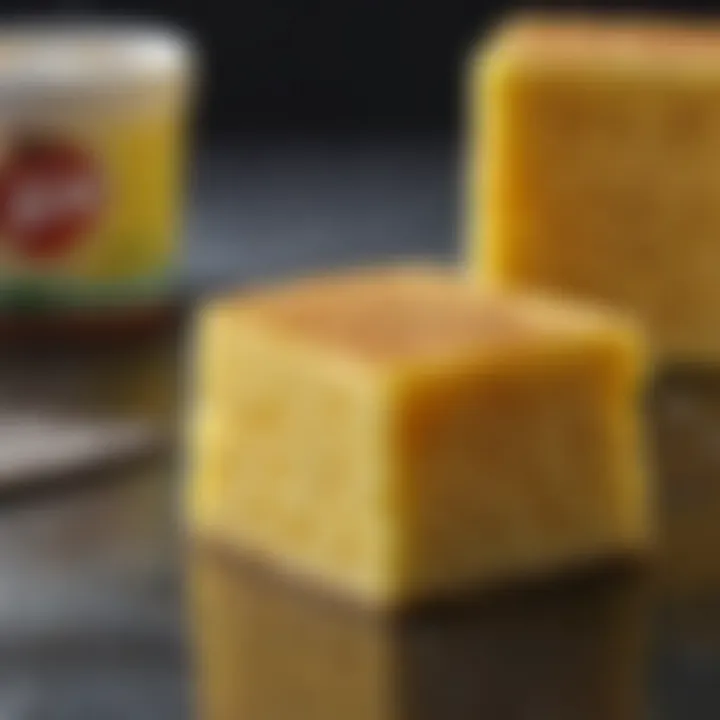
Alternative Methods for Sanitizing Sponges
Sanitizing cleaning sponges is crucial for maintaining hygiene in the kitchen. While microwaving is an effective and popular method, it isn't the only option available. Understanding alternative methods for sanitizing sponges provides valuable insights into maintaining kitchen cleanliness. These methods can be beneficial depending on the circumstances and preferences of the user.
Boiling Sponges
Boiling sponges is a traditional method for sanitizing. This method is straightforward and effective. When you submerge a sponge in boiling water, the high temperature kills bacteria and germs. Usually, it's best to boil the sponge for at least 5 minutes, ensuring that the heat penetrates thoroughly. However, be cautious with the material of the sponge; some may not withstand such high temperatures and could degrade.
Key benefits of boiling include:
- Simplicity: Requires no special tools aside from a pot and water.
- Effectiveness: High temperatures eradicate most pathogens.
- Environmentally Friendly: Does not involve chemicals or bleach.
But there are also considerations:
- Material Compatibility: Not all sponges can endure boiling.
- Burn Risk: Handling hot water requires caution to avoid burns.
Soaking in Bleach Solutions
Soaking sponges in bleach solutions is another effective alternative. This method uses the disinfecting properties of bleach to kill harmful bacteria. A common recommendation is to dilute bleach in water, using about one tablespoon of bleach per gallon of water. Sponges should soak in the solution for at least 5 minutes. After soaking, thoroughly rinse the sponge to remove any bleach residue before use.
The advantages of this method are:
- Strong Disinfectant: Bleach is proven to kill a wide array of germs.
- Cost-Effective: Bleach is accessible and affordable for most consumers.
- Quick Process: The soak duration is relatively short.
Despite its benefits, the method comes with cautions:
- Chemical Concerns: Some people may be sensitive to bleach fumes.
- Color Damage: Bleach can discolor certain sponges, impacting their appearance.
It's essential to integrate various methods for sanitizing sponges, depending on personal preferences and specific requirements.
Proper Maintenance of Cleaning Sponges
Maintaining cleaning sponges is crucial for ensuring a hygienic kitchen environment. Sponges serve as vital tools for cleaning surfaces and utensils, but they can also harbor bacteria if not handled properly. Regular maintenance not only prolongs the lifespan of sponges but also contributes to overall kitchen safety. Given the porous nature of sponges, they readily absorb food particles and moisture, creating an ideal breeding ground for harmful microorganisms. Understanding the importance of proper maintenance can significantly mitigate these risks.
Frequency of Microwaving for Optimal Cleanliness
Microwaving sponges is an effective method for killing bacteria and sanitizing them. However, it is essential to establish a frequency for this practice to achieve optimal results. Ideally, sponges used daily should be microwaved once every few days. A frequency of three to four times a week can help maintain a good balance between thorough cleaning and sponge longevity.
There are specific guidelines to follow when microwaving:

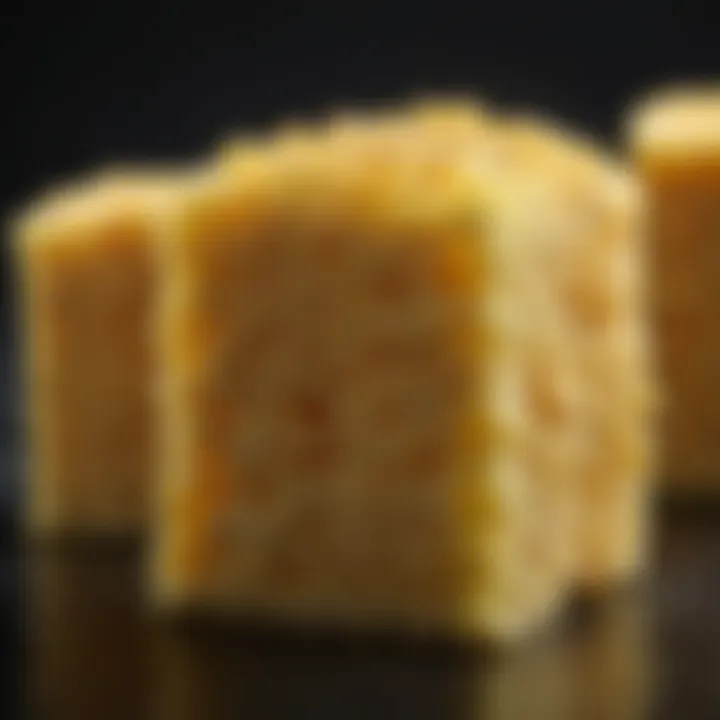
- Ensure the sponge is wet before microwaving. A dry sponge can catch fire.
- Place the sponge in a microwave-safe container.
- Set the microwave on high for about two minutes.
- Allow it to cool before removing as it will be hot.
By sticking to this routine, users can reduce the risk of cross-contamination in the kitchen. Frequent sanitization ensures that sponges remain bacteria-free, enhancing food safety practices during cooking.
Signs a Sponge Needs Replacement
Even with regular sanitization, cleaning sponges have a finite lifespan. It is important to recognize signs that a sponge needs replacement. Some indicators include:
- Foul Odor: A persistent bad smell suggests the sponge is retaining bacteria and needs to be discarded.
- Visible Wear and Tear: Frayed edges or significant discoloration indicate that the sponge has degraded.
- Stiffness or Hardness: If a sponge becomes hard or does not return to its original shape when squeezed, it is time to replace it.
Using a sponge beyond its useful life increases the risk of contaminating cleaned surfaces. By addressing these signs promptly, users can uphold hygiene standards effectively. A good practice is to replace sponges every two to four weeks, especially in high-use situations.
Implications of Using Unsanitized Sponges
The frequent use of kitchen sponges makes it crucial to understand the implications of using unsanitized sponges. These cleaning tools encounter food residues, bacteria, and mold repeatedly. If not cleaned adequately, sponges become a source of contamination rather than a tool for hygiene. Ignoring sponge sanitation can lead to significant health risks and affect food safety, which is especially vital for those who value their health and culinary practices.
Health Risks Associated with Contaminated Sponges
Using unsanitized sponges poses various health risks. Contaminated sponges may harbor harmful bacteria such as Salmonella, E. coli, and even Staphylococcus aureus. These pathogens thrive in moist and warm environments, which any used sponge provides.
- Transmission: When you use a contaminated sponge to wipe surfaces or utensils, pathogens can quickly transfer to food and your hands. This can lead to foodborne illnesses, which may cause symptoms like nausea, vomiting, and diarrhea.
- Increased Risk for Vulnerable Populations: Individuals with weakened immune systems, children, and elderly people are particularly at risk. In these groups, foodborne illnesses can lead to severe complications.
- Long-Term Health Effects: Continuous exposure to harmful bacteria due to improper sponge sanitation may lead to chronic health issues.
Impact on Food Safety and Preparation
The implications for food safety when using unsanitized sponges are significant. Cleanliness in food preparation areas is paramount for preventing foodborne diseases.
- Cross-Contamination: Unsanitized sponges can cause cross-contamination, where harmful bacteria spread from one type of food to another. For instance, using the same sponge to clean fish and then vegetables can introduce dangerous bacteria into your diet.
- Decreased Shelf Life: Bacteria residing on unclean sponges can lead to premature spoilage of food, thereby affecting not only health but also economics. Food that spoils quickly results in waste and increased grocery expenses.
- Compromised Cooking Environments: The kitchen is where food safety begins. Using dirty sponges in the kitchen could undermine all efforts taken to maintain a safe cooking environment.
"Understanding the cleanliness of sponges is not just good practice; it's essential to safeguard one's health and the quality of food prepared."
Finale
The conclusion of this article underscores the critical significance of maintaining sanitized sponges in the kitchen. This aspect may seem trivial, yet it bears immense consequences for kitchen hygiene and food safety. Clean sponges are essential for preventing the proliferation of harmful bacteria, which can lead to foodborne illnesses. Not only does proper sanitation using methods like microwaving kill these pathogens, but it also promotes a healthier cooking environment.
Summarizing Key Takeaways
- Regular sanitization is crucial. Microwaving sponges effectively reduces the number of germs and bacteria present, making it a preferred method.
- Duration matters. Spending sufficient time in the microwave is necessary for effective sanitation. Recommendations suggest around 1-2 minutes, ensuring that the heat penetrates adequately.
- Safety first. Taking precautionary measures, such as using microwave-safe containers, is vital. These steps minimize risks of burns and accidents, allowing users to clean sponges without worry.
- Alternative methods exist. While microwaving is effective, options like boiling and soaking in bleach can also sanitize sponges.
- Routine maintenance is essential. Recognizing when a sponge should be replaced is part of comprehensive sponge care, further enhancing kitchen cleanliness.
Overall, consistent attention to sponge cleanliness contributes significantly to food safety and overall kitchen health.
The Importance of Regular Sponge Care
Regular sponge care is often overlooked in kitchen routines. Yet, it plays a pivotal role in health and safety concerning food preparation. Sponges accumulate food particles and moisture, creating an ideal environment for bacteria to thrive. Therefore, routine sanitization cannot be neglected.
Furthermore, as sponges exhibit signs of wear and tear, such as fraying or an unpleasant odor, they need timely replacement. Ignoring these indications can lead to contamination of utensils and surfaces, thus heightening the risk of foodborne illnesses. Maintaining a schedule for cleaning and replacing sponges ensures that they serve their purpose effectively.
In summary, adopting regular sponge care practices is foundational to a safe kitchen. This includes not just sanitization but also understanding the lifespan and replacement needs of sponges.







